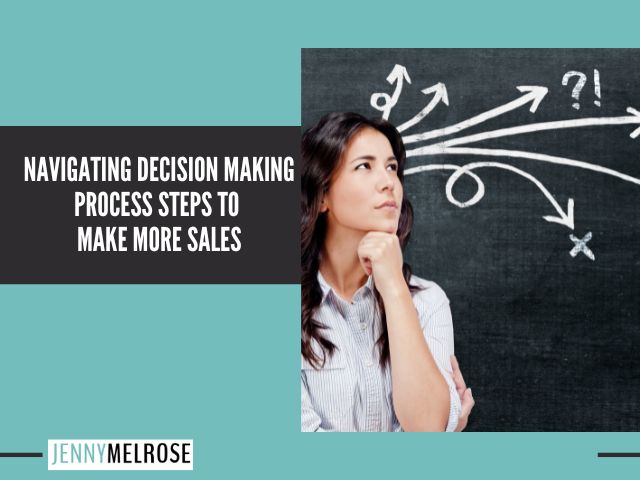Learn how to guide potential buyers through the decision making process steps with confidence. Discover proven steps that turn consideration into conversion and boost your sales.
IE 452: Navigating Decision Making Process Steps to Make More Sales

The customer journey consists of three critical stages:awareness, consideration, and decision.
While the awareness stage introduces potential customers to your brand and the consideration stage helps them evaluate their options, the decision stage is where the magic happens—where prospects transform into paying customers.
As entrepreneurs and business owners, understanding how to effectively guide customers through this final stage can dramatically impact your conversion rates and overall business success.
The decision stage represents a crucial moment in the customer journey.
At this point, your potential customer knows they have a problem, understands that you offer a solution, and has done their research.
They’re no longer in information-gathering mode but instead trying to make that final choice between you and your competitors.
They’re asking themselves, “Is this the right fit for me?” and “Can I trust this person/business to deliver what they promise?”
Your job is to address these questions and concerns directly, building trust and confidence in your offering.
Step 1 – Identify the Problem or Need
What exactly are buyers looking for during the decision stage?
First and foremost, they want reassurance about their return on investment.
They need to know that your product or service will solve their problem effectively and be worth every penny they spend.
This is where social proof becomes invaluable—testimonials, case studies, and success stories from previous clients demonstrate that others have achieved the results you promise.
Additionally, clarity is crucial at this stage. Your sales page should clearly outline what customers will receive, the pricing structure, and any options available, without overwhelming them with too many choices.
Buyers also seek empathy; they want to feel understood and confident that you genuinely care about helping them solve their problems.
Step 2 – Gather Information
Content plays a pivotal role in the decision stage.
Effective content types include before-and-after comparisons showing the transformation your customers can expect, detailed case studies highlighting successful client journeys, product demos that give prospects a glimpse of what they’ll receive, and webinars with live Q&A sessions where you can address concerns directly.
A “Why Choose Us” section or email that emphasizes your unique value proposition can also help differentiate you from competitors.
The key is to create content that speaks directly to your audience’s concerns and clearly demonstrates how your offering meets their needs better than alternatives.
Step 3 – Evaluate Alternatives
One of the biggest mistakes entrepreneurs make during the decision stage is failing to provide sufficient social proof.
Without evidence that your solution works for others, prospects may hesitate to take that final step.
Another common error is not addressing objections head-on.
Every audience has specific concerns or reasons they might hesitate to buy; by proactively addressing these objections, you can remove barriers to conversion.
Finally, many businesses overwhelm prospects with too many options or focus too heavily on features rather than transformation.
Remember, your audience doesn’t want to know every detail of what they’ll get—they want to know how their life will improve after working with you.
Step 4 – Weigh the Evidence
The decision stage isn’t about pushing sales or being “salesy”—it’s about authentically showing potential customers that you understand their problems and have a valuable solution.
By focusing on the transformation you provide, addressing concerns directly, and building trust through social proof and personalized communication, you can guide prospects smoothly through the decision process.
Step 5 – Choose Among Alternatives
When done correctly, sales becomes less about convincing and more about connecting—showing your audience that you’re the perfect fit for their needs.
By mastering this final stage of the customer journey, you’ll not only convert more prospects but also build stronger relationships with customers who feel confident in their decision to work with you.


